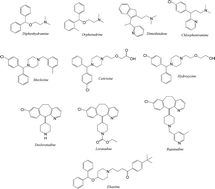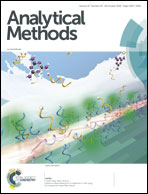Development and validation of an EI-GC-MS method for the determination of 11 antihistamines in whole blood. Applications in clinical and forensic toxicology
Abstract
Antihistamines are used widely in clinical practice to alleviate symptoms associated with allergic reactions, or to treat insomnia and motion sickness. The wide use of these drugs, in some cases without prescription, as well as their interactions with other drugs and alcohol that enhance their sedative adverse effects, led to the necessity for a precise and sensitive method for their simultaneous determination in whole blood. A gas chromatography-mass spectrometric method was developed, optimized and fully validated for the simultaneous determination of the 11 most commonly used antihistamines in Greece (diphenhydramine, orphenadrine, chlorpheniramine, dimethindene, meclozine, hydroxyzine, loratadine, desloratadine, cetirizine, rupatadine and ebastine) in whole blood samples. This method includes protein precipitation and solid-phase extraction with two stages of elution, followed by derivatization. The recoveries were higher than 80% for all studied antihistamines. The calibration curves were linear for each antihistamine between 5.00 and 1000.0 ng mL−1 with a correlation coefficient (R2) higher than 0.990. The limits of detection and quantification for each analyte were 1.50 and 5.00 ng mL−1, respectively. Accuracy and precision were also determined and were found to be less than 6.5 and 11%, respectively. The developed method was successfully applied to casework samples during the investigation of clinical and forensic cases.



 Please wait while we load your content...
Please wait while we load your content...